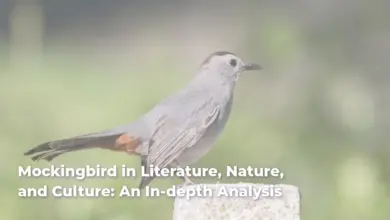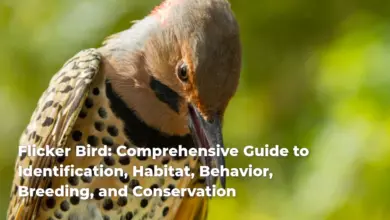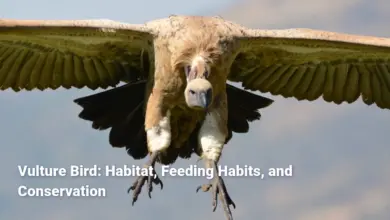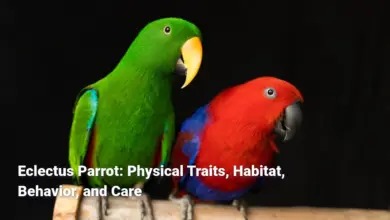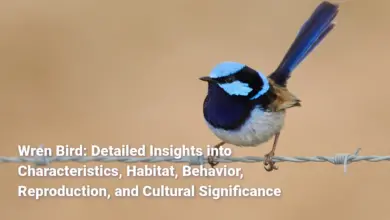Yellow Finch: Detailed Guide to Characteristics, Habitat, Feeding, Breeding, and Conservation
An In-Depth Exploration of the Yellow Finch: From Physical Traits and Habitat to Feeding, Breeding, and Conservation Efforts
Yellow finches are small, vibrant birds that capture the hearts of bird watchers and nature enthusiasts alike. Often associated with cheerfulness, these lively creatures are known for their bright plumage, particularly in males during the breeding season. Across North America, the most notable species is the American Goldfinch (Spinus tristis), but there exists a rich diversity among various types of yellow finches. These birds are not only visually striking but also possess fascinating behaviors and habits that make them enchanting to observe. They are frequently seen flitting from feeder to feeder in gardens, performing acrobatic displays, and engaging in lively social interactions with one another.
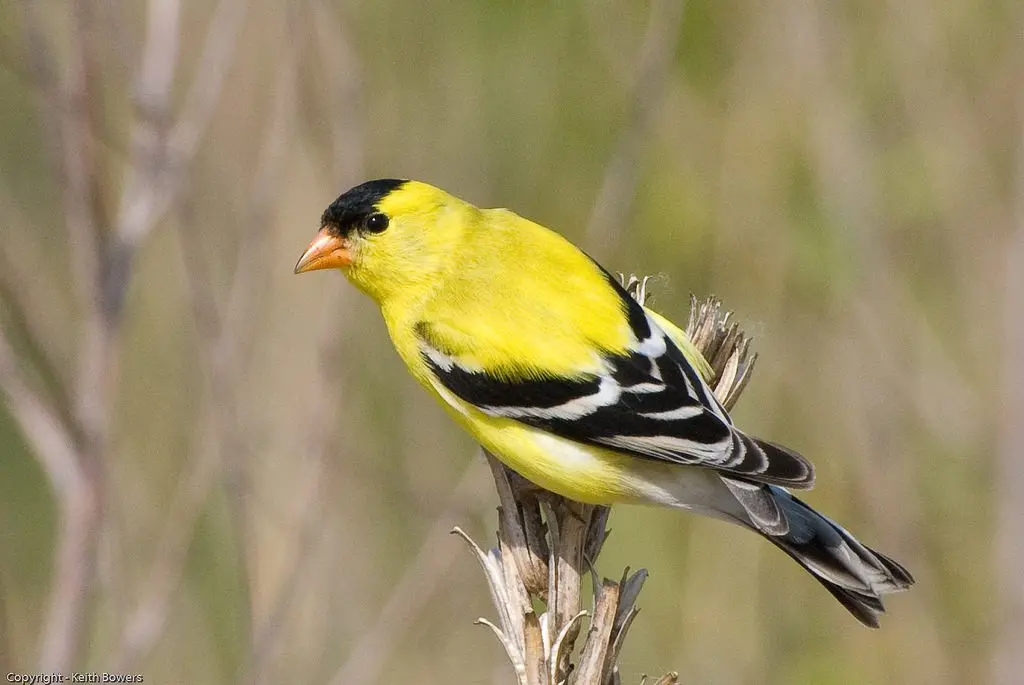
Yellow finches hold a special place in many cultures, symbolizing joy, renewal, and prosperity. Their common presence in gardens and urban parks also makes them accessible to the general public. This article delves into the characteristics, habitats, feeding habits, breeding behaviors, conservation status, and unique cultural significance of yellow finches, particularly the American Goldfinch. By exploring these aspects, we can appreciate the intricacies of these beloved birds that add a splash of color to our surroundings.
Characteristics of Yellow Finches
Yellow finches are characterized by their vibrant coloration, sociable nature, and adaptability to various environments. These small birds are most recognized for their cheerful yellow plumage, which can vary according to sex, age, and season. Male American Goldfinches, for instance, flaunt a striking, bright yellow coat during the breeding season, while females and non-breeding males wear more muted browns and yellows, reminiscent of autumn leaves fluttering to the ground. This seasonal change not only aids in attracting mates but also provides camouflage when necessary.
In terms of their physical attributes, yellow finches measure about 4.3 to 5.1 inches long, with an impressive wingspan of 7.5 to 8.7 inches. Their lightweight bodies, ranging from 0.4 to 0.7 ounces, allow them to perform agile maneuvers as they flit from branch to branch. Various studies highlight that their short, conical bills are particularly well-adapted for seed cracking a vital skill given their granivorous diet.
The social behavior of yellow finches is another defining characteristic. These birds are often seen feeding and roosting together in flocks, reminiscent of a lively gathering of friends. This social structure not only enhances their foraging efficiency but also contributes to their collective safety against potential predators. Witnessing their interactions brings forth joy and encapsulates the essence of community in the avian world.
In summary, yellow finches are a delightful blend of beauty and charm, showcasing dynamic coloration, adaptability, and a social nature that makes them a joy to observe. Their presence enriches the environments they inhabit and contributes to the biodiversity of avian life across North America.
Size and Appearance
Yellow finches exhibit a charming and compact appearance that enhances their endearing nature. Measuring between 4.3 to 5.1 inches in length, these birds represent a petite embodiment of beauty and grace in the avian world. Their wingspan typically measures around 7.5 to 8.7 inches, allowing for agile flight as they dart through trees and gardens. Weighing between 0.4 to 0.7 ounces, they are light enough to give the impression of fluttering feathers in the gentle breeze.
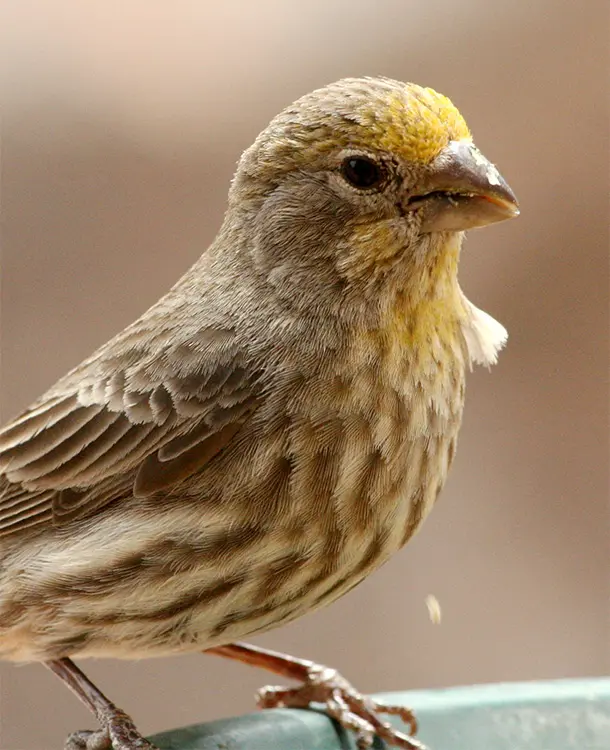
One of the most striking aspects of yellow finches, particularly the male American Goldfinch, lies in their vibrant coloration. During the breeding season, male goldfinches don a brilliant yellow plumage with striking black wings and a distinctive black cap on their heads, much like the proverbial golden sun illuminating a clear sky. This vivid coloring serves not merely as a signaling tool for potential mates but also as an awe-inspiring sight for bird enthusiasts and casual observers alike.
Females and non-breeding males take on a more muted palette, showcasing earthy brown tones interspersed with hints of yellow. This subtlety serves as a necessary strategy for camouflage, akin to a revegetating forest floor that hides its inhabitants from predators. Beneath the lush exterior of their feathers, yellow finches possess conical, short, and pointed beaks, adapted for cracking seeds. This anatomical feature showcases their specialization as seed eaters every aspect of their appearance serves an ecological purpose.
Yellow finches are also noted for their distinct head shape, which is slightly flattened on top. Their long, notched tails contribute to their stability in flight, allowing them to make swift navigations while offering displays of grace and agility. The pointed and triangular wings of yellow finches enhance their ability to maneuver through open areas and vegetation, enabling them to adapt seamlessly to various environments.
In conclusion, the size and appearance of yellow finches including their vibrant plumage, sturdy build, and specialized features are finely tuned to suit their ecological roles. Their delicate beauty, combined with practical adaptations, defines these birds as fascinating subjects of study and admiration.
Color Variations
Color variations in yellow finches are one of their most captivating features, illustrating the complexity of their appearance and ecology. While the male American Goldfinch draws attention with an eye-catching bright yellow color during the breeding season, the color palette transforms subtly based on age, gender, and seasonal factors. These shifts in coloration can evoke comparisons to a painter artistically layering colors on a canvas, each hue adding depth and personality to the masterpiece that is the yellow finch.
Male American Goldfinches are adorned in brilliant yellow plumage interspersed with striking black wings and a characteristic black cap on their heads. When the breeding season concludes, these vibrant colors fade into more neutral tones of brown and gray, a transformation that resembles the onset of autumn as the warm hues of summer yield to winter’s cool embrace. This seasonal change is not only visually striking but serves an important adaptive function dulling their coloration affords them a degree of camouflage during the non-breeding months.
Conversely, female and non-breeding male yellow finches don a comparatively subdued ensemble, primarily characterized by dull yellow-brown and grayish-brown tones. This muted palette allows them to blend seamlessly into the foliage, reducing their visibility to predators. The interplay of vibrant and subdued colors among yellow finches serves as an excellent illustration of the survival strategies employed by different genders and ages within the species.
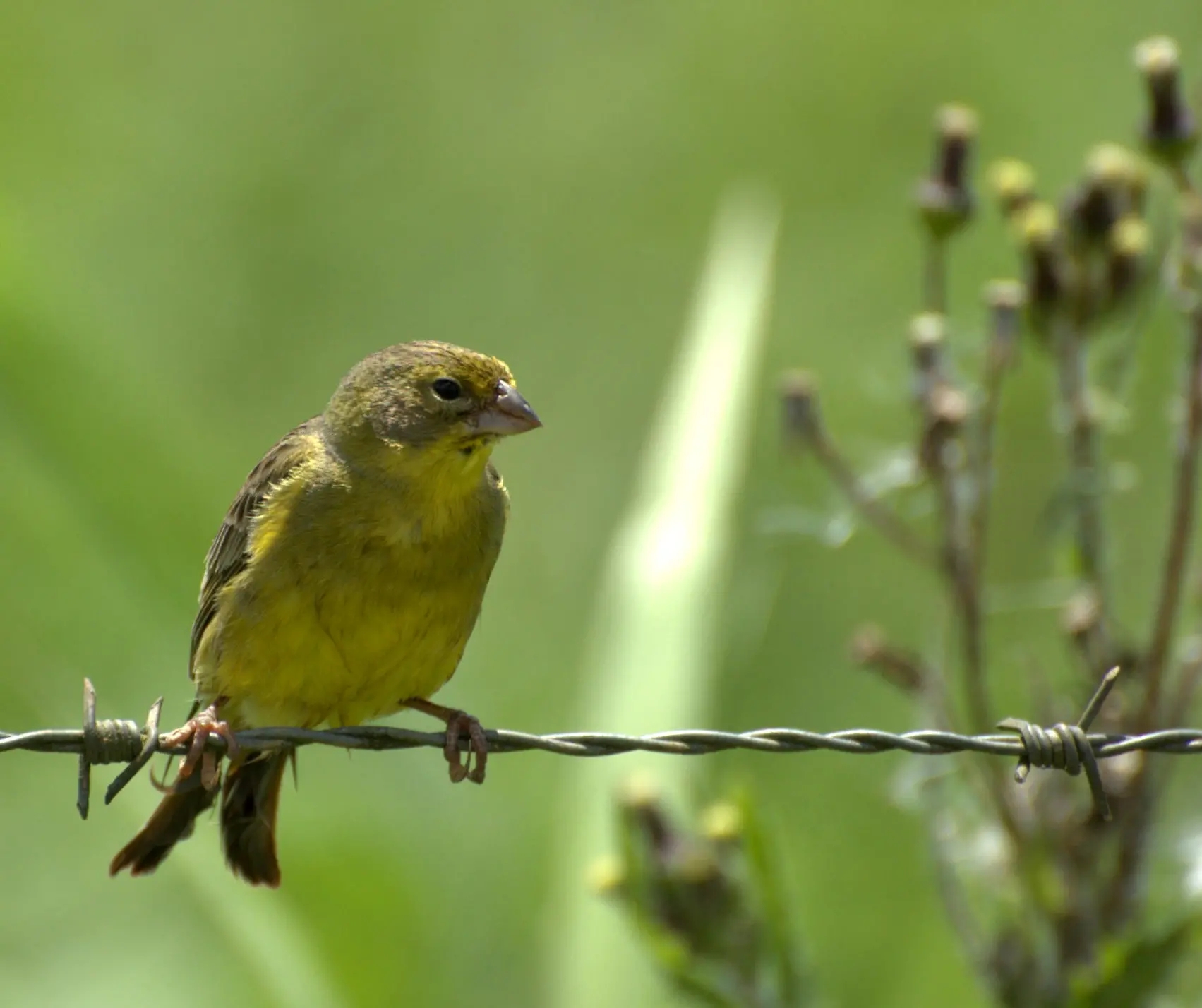
Additionally, color variations extend beyond gender differences; individuals may exhibit varying degrees of brightness influenced by factors such as age or even diet. Diet, particularly the intake of carotenoid-rich seeds, can enhance the intensity of yellow coloration in these birds. This external factor provides a compelling connection between nutrition and appearance, showcasing how the environment directly impacts their majestic visual display.
In sum, color variations among yellow finches not only highlight their aesthetic appeal, but also reflect adaptations crucial for survival. Their shifting hues tell the story of resilience, evolution, and the complex interplay between nature and nurture, inspiring admiration and curiosity in those who encounter them.
Habitat of Yellow Finches
Yellow finches demonstrate remarkable adaptability, thriving in a variety of habitats across North America. These small birds tend to favor open, sunny areas filled with diverse vegetation, which provide ample opportunities for foraging and nesting. Their common presence in gardens and parks speaks to their ability to coexist harmoniously with human developments, creating a delightful urban landscape dotted with their cheerful colors.
We can characterize the habitats of yellow finches through the following categories:
- Urban Areas: Yellow finches are frequently spotted in parks, private gardens, and urban green spaces, where they can easily find thistle, sunflowers, and asters. These habitats not only serve as sources of food but also as safe nesting sites away from more aggressive predators.
- Open Woodlands and Fields: Fields, meadows, and weedy areas mark another preferred habitat for yellow finches. These spaces are rich in the seeds and plants they require, making them ideal for both feeding and breeding.
- Coniferous Forests: Certain species of yellow finches, like the Pine Siskin, demonstrate a preference for habitats abundant in conifers. Their adaptability enables them to thrive in different forest types, showcasing their resilience in diverse environments.
One must also note the geographical distribution of yellow finches. Ranging from southern Canada down to northern Mexico, they frequently inhabit areas near water sources and in agricultural or suburban environments. Their adaptability to urban life allows them to flourish in both natural and man-made settings, making their cheerful presence a common sight.
Moreover, the migratory patterns of some yellow finch species exemplify their resilience when seasons change. Many yellow finches migrate south during the winter months, demonstrating a flexible response to seasonal variations and shifting food availability. This ability to adapt to changing environments reflects their sturdy survival instincts and highlights the importance of a varied habitat rich with resources necessary for their growth and reproduction.
In conclusion, yellow finches are versatile in their habitat preferences, favoring urban green spaces, open fields, and forested areas. Their adaptability to various environments not only ensures their survival but also enhances the richness of biodiversity in the ecosystems they inhabit.
Preferred Geographical Regions
Yellow finches, particularly the American Goldfinch (Spinus tristis), thrive in specific geographical regions that play a crucial role in their nesting and feeding habits. Understanding their preferred regions highlights their adaptability and resourcefulness in various environments. These regions can be classified into several key areas where yellow finches are most commonly found:
- Open Areas and Fields: Goldfinches are frequently seen in open habitats that provide a wealth of seeds and nesting materials. They particularly favor weedy fields, floodplains, and gardens filled with flowering plants such as sunflowers and asters. These areas not only furnish necessary nutrition but create optimal conditions for their nesting needs.
- Urban and Suburban Environments: One of the remarkable adaptations of yellow finches is their ability to thrive in urban and suburban settings. Parks, yards, and community gardens have become favorite habitats due to the abundant food sources and safety from larger predators. The presence of sunflower plants and feeders stocked with seeds in such areas attracts goldfinches, providing easy access to food and shelter.
- Coniferous and Mixed Forests: While open areas dominate their habitat preferences, some yellow finch species, such as the Pine Siskin, prefer coniferous or mixed forests. These environments offer a different array of food sources while also providing ample shelter from predators. Their presence in these habitats showcases their flexibility in meeting their ecological needs.
The geographical distribution of yellow finches in North America spans from southern Canada to northern Mexico, demonstrating their adaptability to a range of climates and ecosystems. Their migratory behaviors in response to seasonal variations also illustrate their keen instincts for survival. For example, yellow finches often migrate south during the winter months to seek food resources and return north in the spring to breed when resources are abundant.
In summary, yellow finches favor a diverse range of habitats, including open fields, urban areas, and forests. Their geographical preferences underscore their adaptability and resilience, enabling them to flourish in various environments while playing a vital role in the ecosystems they inhabit.
Nesting Sites and Behaviors
The nesting behaviors of yellow finches reflect their social nature and adaptability to various habitats, showcasing their instinctual prowess for survival and reproduction. When it comes to nesting sites, American Goldfinches exhibit distinct preferences in selecting safe and resource-rich locations.
- Nesting Height and Structures: Goldfinches typically build their nests in shrubs or small trees, often positioned between 4 to 20 feet above the ground. This height not only provides concealment from predators but also places their nests close to food sources. The nests are usually constructed where two or three vertical branches join, creating a sturdy base for their homes and allowing the female goldfinch to weave her creation with skill.
- Nest Construction: Remarkably, female goldfinches are responsible for building the nest, employing a variety of materials such as grasses, twigs, and plant fibers. The interior is lined with soft materials, including down from thistle seeds, to create a comfortable environment for the eggs. This construction process is akin to a skilled artisan assembling a delicate piece of furniture every material is chosen with purpose, forming a sturdy yet inviting space for the young.
- Nesting Timing: Unlike many bird species that initiate breeding in early spring, yellow finches experience a delayed breeding season, typically commencing in late spring or early summer. This timing aligns with the ripening of their preferred food sources, particularly thistle plants. Their unique choice to breed later in the year reflects an intelligent adaptation, ensuring that ample food is available for raising their young.
- Egg Laying and Incubation: After constructing the nest, the female typically lays 3 to 7 light blue eggs, which she incubates for approximately 12 to 14 days. During this crucial period, the male goldfinch lends support by feeding the female, showcasing their cooperative approach to parenting. Once hatched, the chicks remain dependent on their parents for nourishment and protection for several weeks.
The nesting behaviors of yellow finches illustrate their adaptability and instinctive strategies for survival. Their carefully selected nesting sites, attention to construction details, and cooperative parenting enhance the likelihood of successful reproduction. Observing these behaviors adds richness to our understanding of yellow finches and their role in the ecosystem.
Feeding Habits of Yellow Finches
Yellow finches are predominantly granivorous, relying heavily on a diet primarily composed of seeds. Their feeding habits reflect their adaptability and resourcefulness, ensuring they obtain the necessary nutrients to thrive. They are known for feeding at a variety of locations, including gardens, parks, and open fields.
- Primary Diet: The staple of yellow finches’ diet consists of sunflower seeds, nyjer thistle seeds, millet, canary seeds, and other small seeds. These seeds provide essential fats, proteins, and carbohydrates, vital for maintaining energy levels and overall health. Their beaks, uniquely adapted to crack seeds, play a crucial role in their feeding a feature that defines their ecological niche.
- Insect Consumption: In addition to seeds, yellow finches diversify their diet by supplementing it with insects, particularly during the breeding season. These insects provide the necessary protein for raising their young. Caterpillars, beetles, and spiders commonly form part of their diet during this crucial time. This dietary variation is akin to an artist blending colors on a palette, creating a well-rounded meal plan for optimal growth.
- Fruiting Season: During certain seasons, yellow finches may opportunistically feed on fruits and berries like raspberries, blueberries, and apples. The fruits offer vital vitamins, adding nutritional diversity to their diet. This behavior highlights the bird’s adaptability to seasonal changes in food availability and fortifies their status as resourceful foragers.
- Foraging Techniques: Yellow finches often forage in flocks, capitalizing on social dynamics to locate food sources more efficiently. This communal approach allows them to take advantage of various feeding opportunities in their environment. When accessing food, yellow finches are known to cling to the stems of plants or feeders with their feet, often feeding while hanging upside down. This unique technique provides access to otherwise unreachable seeds, showcasing their ingenuity in foraging.
In conclusion, yellow finches exhibit varied and adaptive feeding habits, primarily consuming seeds while supplementing their diet with insects and fruits when available. Their social foraging strategies and unique feeding techniques highlight their resilience and innate intelligence, reinforcing their essential role in the ecosystem.
Primary Diet
Yellow finches predominantly have a granivorous diet, with seeds serving as their primary food source. This fact illustrates their specialization as seed eaters and their fundamental role in their ecosystems. They seek out a wide variety of seeds, including those from sunflowers, thistles, and millets. This diet is crucial for providing the essential fats and nutrients that maintain their energy levels, especially during the demanding breeding season.
However, seeds do not make up the entirety of their diet. Yellow finches also include insects in their meals, particularly during the breeding period when they require additional protein to support the growth of their young. Common insects found in their diet include caterpillars, beetles, and spiders, all of which are sources of vital nutrition. This flexibility in their diet is reminiscent of a chef crafting a complex dish; varying ingredients lead to a well-balanced and nutritious meal.
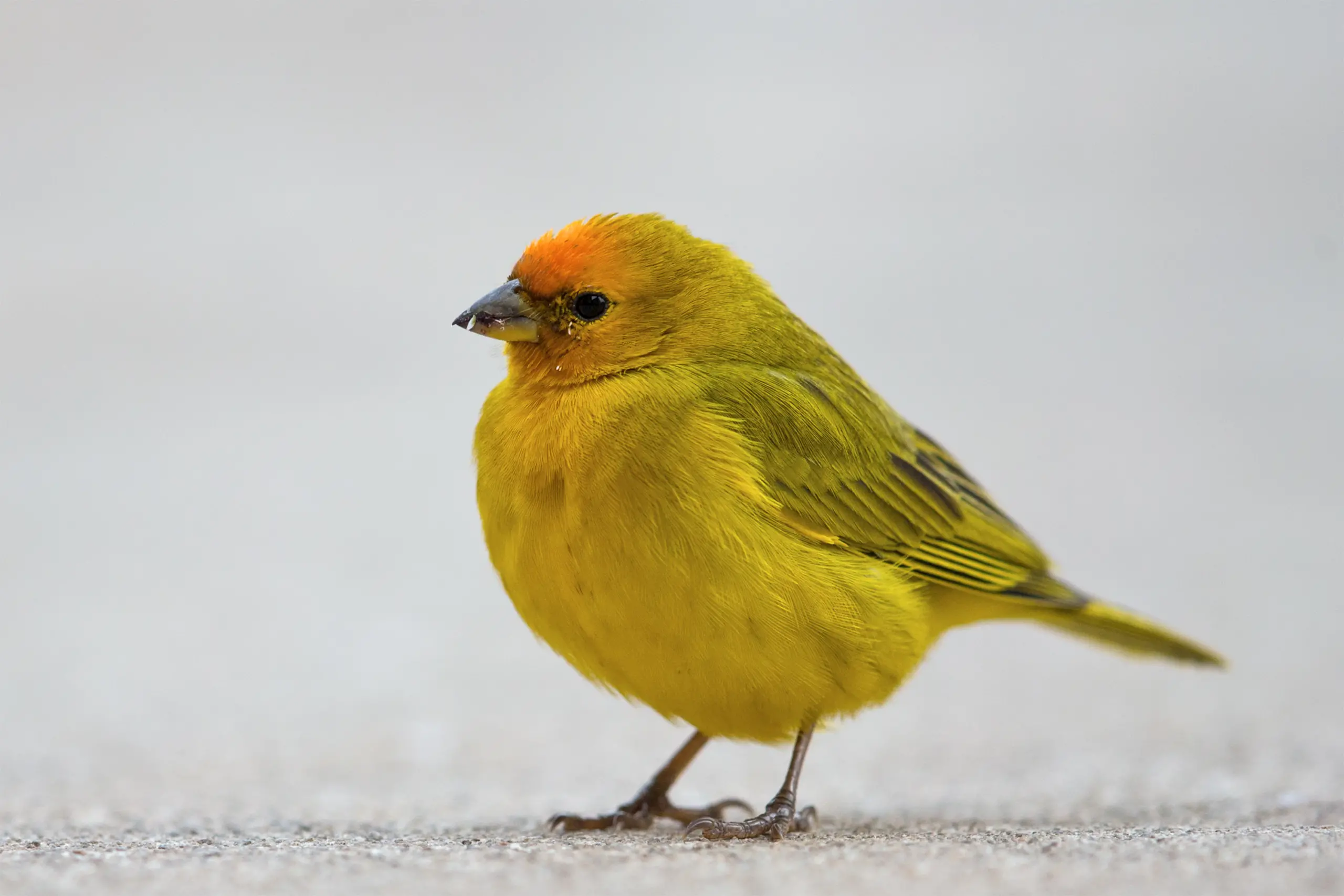
During particular seasons, yellow finches are known to opt for fruits and berries, such as raspberries and cranberries. Fruits provide vital vitamins and contribute to the overall nutritional diversity of their diet. The opportunistic nature of yellow finch feeding habits underlines their adaptability and resilience in changing environments.
Moreover, yellow finches exhibit remarkable foraging techniques that enhance their effectiveness as seed hunters. They often perch on weeds or feeders, using their feet to cling onto slender stems while maneuvering to access food sources. This capability allows them to exploit food availability efficiently, revealing an innate intelligence in their feeding strategies.
In conclusion, yellow finches maintain a diet primarily centered around seeds while supplementing their nutrition with insects and fruits. Their adaptability in foraging techniques and inclusion of diverse food sources highlight their resilience and support their health, ensuring the continuation of these vibrant birds across their various habitats.
Foraging Techniques
Yellow finches showcase remarkable foraging skills that reflect their adaptability and social behaviors while seeking their favorite seeds. Their foraging techniques not only enable them to access various food sources but also emphasize their communal nature, enhancing their chances of survival in diverse habitats.
- Clinging and Hanging: One of the most distinctive foraging techniques employed by yellow finches is their ability to cling to the stems of plants while feeding. This unique technique permits them to hang upside down, allowing access to seeds that may be out of reach for other birds. They expertly use their short, conical bills to crack open tough seed shells, demonstrating phenomenal dexterity and precision.
- Flocking Behavior: Yellow finches often forage in social groups, utilizing their collective foraging strategies to uncover food sources more efficiently. This social behavior creates an atmosphere of cooperation among the birds, reminiscent of a lively marketplace where individuals share information about the best food spots. Such interactions not only aid in locating food more effectively but also ensure safety from predators, as there is strength in numbers.
- Seasonal Foraging Adaptations: Their foraging habits are versatile and change with the seasons. In early spring and summer, yellow finches prefer fresh seeds from blossoming plants like sunflowers and thistles. As natural food sources become scarcer in the fall and winter months, they often become more social and may congregate at feeders stocked with seeds. This seasonal shift in foraging behavior exhibits their adaptability to environmental changes and resource availability.
- Use of Bird Feeders: Yellow finches are keen beneficiaries of backyard feeders. Many bird enthusiasts actively attract these beautiful creatures by providing Nyjer thistle seeds and sunflower seeds. Feeding stations serve as vital resources, especially during harsh winters when their natural food supplies are limited. This relationship highlights the mutually beneficial exchange between humans and wildlife, promoting conservation practices in backyard environments.
In summary, yellow finches exhibit a variety of fascinating foraging techniques that enhance their survival in diverse habitats. From their unique hanging feeding behavior to their communal foraging strategies, these small birds showcase both adaptability and social aptitude in their quest for sustenance. The various feeding habits of yellow finches reinforce the importance of biodiversity in our ecosystems and highlight the dynamic relationships between species and their environments.
Breeding Behavior of Yellow Finches
Breeding behavior in yellow finches, specifically in the American Goldfinch, is a captivating process that reflects their adaptability and nurturing traits. Their unique approaches to courtship, nesting, and caring for their young reinforce their role in maintaining healthy populations of these vibrant birds.
- Timing of Breeding: Yellow finches exhibit a delayed breeding season, typically commencing between May and August. This unique timing allows them to synchronize their reproduction with the peak availability of seeds from blooming plants, particularly thistles. By breeding later in the season than many other bird species, they ensure abundant food resources for their young during the critical early stages of development.
- Male Courtship Displays: During the breeding season, male yellow finches actively engage in courtship displays to attract females. They become livelier, singing melodious songs and showcasing their vibrant plumage. Their songs can attract multiple females, while their bright colors serve as visual signals of health and vigor. The male’s singing and fluttering displays can be likened to a performance artist captivating an audience, adding an element of charm to their courting rituals.
- Nest Building and Egg Laying: After forming a pair bond, the female yellow finch typically constructs a nest in shrubs or small trees. Using a variety of plant materials, she builds a comfortable, cozy environment where she will lay about 3 to 7 light blue eggs. The nesting sites, often chosen for their proximity to food sources, serve as vital zones for her young to thrive once they hatch.
- Parental Care: Once the chicks hatch, both parents take an active role in their care, providing them with food and protection. While the female takes on the primary incubating role, the male assists by bringing food to the nest, showcasing a cooperative parenting strategy that promotes the survival of their offspring. This dedicated approach underscores the importance of nurturing behaviors in avian species.
In conclusion, breeding behavior in yellow finches encapsulates a remarkable blend of timing, courtship, nest building, and parental care. Their unique mating rituals and dedication to raising their young speak to their adaptability and resilience as a species, ensuring their continued delight in gardens, parks, and forests across North America.
Mating Rituals
The mating rituals of yellow finches, particularly those of the American Goldfinch (Spinus tristis), are beautiful and intricate displays of courtship that underline their social nature. During the breeding season, which typically spans from May to August, male goldfinches exhibit a variety of engaging behaviors aimed at attracting potential mates.
- Vibrant Courtship Displays: Males prepare for the breeding season by developing more vibrant plumage that attracts females. The bright yellow color of the males, combined with their black wing feathers and caps, becomes strikingly apparent as they perform their courtship rituals. This vivid display serves to signify their health and vitality, similar to popular fashion trends where bold colors and styles seek attention.
- Singing as Attraction: Male goldfinches are highly vocal during the breeding season, filling the air with melodious songs that resonate throughout their habitats. Their vocalizations play a crucial role in attracting females and communicating their presence. As they sing, they flutter their wings and perform acrobatic flights bounding through the air in what can be likened to an artist showcasing their skills, capturing the attention and interest of those around them.
- Territorial Behavior: To enhance their chances of attracting a mate, male goldfinches establish and defend territories. They may engage in aggressive displays towards rival males, signaling their fitness to potential partners. This territorial nature illustrates the competitive aspects of their mating rituals, as males strive to win favor in securing both a partner and a designated space for nesting.
- Pair Bonding: Once a male has successfully attracted a mate, the two may engage in behaviors that reinforce their bond. Mutual preening, feeding, and various social interactions assist in strengthening the partnership. Much like a dance that fosters connection and intimacy, these behaviors solidify the relationship prior to nesting and breeding.
In summary, the mating rituals of yellow finches combine vibrant displays of color, melodious songs, territorial behaviors, and pair bonding to create an intricate tapestry of courtship. These behaviors exemplify the beauty of nature and highlight the importance of social interactions among avian species, ensuring the next generation can flourish in the environment they collectively inhabit.
Nesting and Care for Young
Nesting and care for young in yellow finches are pivotal aspects of their reproductive strategies that highlight their nurturing instincts and social behaviors. The American Goldfinch, in particular, exhibits remarkable patterns in nesting, egg-laying, and parental nurturing, underscoring the dedication they invest in raising their offspring.
- Nest Construction: The female goldfinch takes on the responsibility of building the nest, typically crafting it in dense shrubs or small trees. One can envision her nesting process akin to a skilled artisan meticulously assembling a delicate piece of furniture. The materials used include grasses, plant fibers, and soft down from thistle seeds. This attention to detail ensures the nest is secure and provides adequate warmth and comfort for the eggs and future chicks.
- Egg Laying: Once the nest is completed, the female lays a clutch of around 3 to 7 eggs, which are light blue in color. The egg-laying process can be likened to an artist’s careful placement of each stroke on canvas, as the female lays one egg a day until the clutch is complete. Incubation lasts approximately 12 to 14 days, during which the female primarily cares for the eggs.
- Parental Involvement: After the eggs hatch, both parents take an active role in the rearing of their young. The initially helpless chicks are fed primarily through regurgitation, as both parents alternate feeding duties as they forage. This cooperative parental behavior enhances the survival of their offspring, ensuring that each chick receives adequate nourishment and attention.
- Nurturing Actions: Attention to their young extends beyond mere feeding the parents are dedicated to maintaining a clean nest environment. They diligently remove fecal sacs from the nest, creating a hygienic space for the chicks. This important behavior showcases their commitment to the health and safety of their young, much like conscientious caregivers.
- Fledging: The young typically fledge the nest approximately 14 to 20 days after hatching. During this period, the chicks begin to develop their feathers and build the skills needed for independent foraging. Parental support continues even after fledging, as the parents guide their young through this critical developmental phase.
In conclusion, the nesting and care behaviors observed in yellow finches reveal an intricate system of cooperation and nurturing. Through meticulous nest construction, egg care, and active parenting, these small birds exemplify the bond between nature and community, ensuring the continuation of their species as they raise the next generation.
Conservation Status of Yellow Finches
The conservation status of yellow finches varies depending on the species, but overall, they tend to be considered species of low concern. However, some, such as the Yellow-headed Brushfinch and the Yellow-breasted Bunting, face significant threats to their populations. To understand their conservation status better, it’s essential to highlight the challenges they face and the measures being taken to protect these vibrant birds.
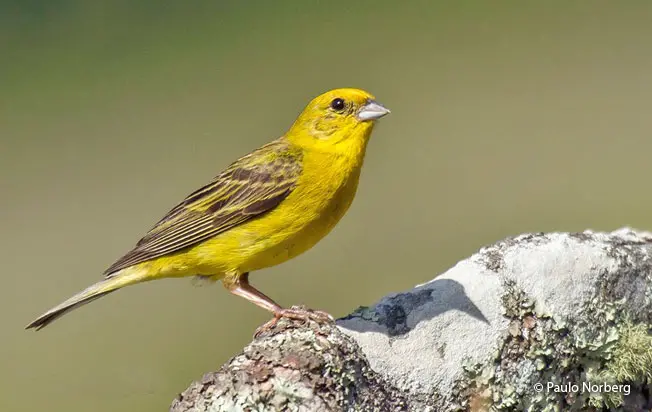
- American Goldfinch (Spinus tristis): Generally, this species is not listed as endangered. However, it encounters threats from habitat loss and fragmentation due to urban development and agricultural activities. The encroachment of urban areas poses challenges to their nesting and feeding habitats, leading to reduced food sources, particularly the seeds of thistle and sunflowers that are essential for their diet during breeding seasons.
- Lesser Goldfinch (Spinus psaltria): This species remains relatively stable overall, yet localized threats exist. Habitat destruction from land development and alterations in farming practices can compromise their suitable habitats in the southwestern United States.
- House Finch (Haemorhous mexicanus): The House Finch is widespread and abundant, although its population has faced declines in specific regions due to environmental pressures. Diseases hinder their growth, and urbanization and predation from domestic animals can undermine nesting success.
- Yellow-headed Brushfinch (Atlapetes flaviceps): This species is designated as endangered due to habitat loss caused by deforestation for agriculture. Its population numbers are critically low, estimated at only 250 to 1,000 individuals, sparking intense conservation efforts to create protected areas.
- Yellow-breasted Bunting (Emberiza aureola): The population of this finch has significantly declined over time, and it is listed as vulnerable. Major threats include habitat destruction driven by agricultural intensification, habitat fragmentation, and pressures from hunting and the illegal pet trade.
In summary, while many yellow finch species are currently stable, others face significant risks stemming from habitat destruction, disease, predation, and climate change. Continued conservation efforts focusing on habitat preservation, public awareness initiatives, and mitigating human impact are crucial in ensuring the survival of these enchanting birds.
Threats to Population
Yellow finches face a multitude of threats that impact their populations across North America, with various factors contributing to their declining numbers. Understanding these threats helps highlight the importance of conservation efforts dedicated to protecting these vibrant songbirds.
- Habitat Loss and Fragmentation: One of the primary threats to yellow finch populations is habitat loss due to agricultural practices, urban development, and land clearing. Transforming natural landscapes into developments can erase nesting and feeding sites essential for survival. As suitable habitats diminish, the availability of vital food sources, such as thistles and sunflowers, becomes increasingly limited.
- Pesticide Use: The application of pesticides in agricultural areas poses additional threats to yellow finches. These chemicals not only eliminate the insects they rely on for additional protein, particularly during breeding seasons but can also have harmful effects on the finches themselves. As pesticide exposure increases, their population resilience can diminish, increasing mortality rates among young and adult birds.
- Predation: Urbanization often leads to increased predation, particularly from domestic cats and other animals attracted to human settlements. As yellow finches become more adapted to living near urban areas, they may encounter predation pressures that were previously less common in their natural environments. This added vulnerability can impede their reproductive success and overall population health.
- Disease: Disease transmission from other bird species poses yet another significant threat. Yellow finches may become susceptible to outbreaks of illnesses that can decimate their numbers quickly. The presence of diseases and viruses carried by larger populations can pose challenges that compromise their health.
- Climate Change: As climate change continues to impact global weather patterns, yellow finches must adapt to shifting climates, which may alter their migratory patterns and food availability. Extreme weather events can lead to habitat destruction and food shortages, further amplifying their vulnerability.
In conclusion, yellow finches are faced with a variety of threats, including habitat loss, pesticide exposure, predation, disease, and climate change. Understanding and addressing these threats through effective conservation measures is crucial for ensuring the long-term survival of yellow finch populations and preserving their vibrant presence in our ecosystems.
Conservation Efforts
Numerous conservation efforts are underway to safeguard yellow finch populations, emphasizing the need for effective strategies to address the various threats they face. Protecting these remarkable birds not only contributes to biodiversity but also enhances the beauty of our natural surroundings.
- Habitat Preservation: One of the key strategies for conserving yellow finches is the preservation of their natural habitats. Conservation organizations are working to protect and restore wetlands, meadows, and gardens to provide suitable living and breeding spaces for finches. Initiatives focus on preserving areas rich in thistle and sunflower plants primary food sources for these birds.
- Public Education and Outreach: Raising awareness about the threats facing yellow finches is crucial for promoting conservation efforts. Educational campaigns aim to inform the public about the importance of preserving habitats and reducing pesticide use in gardens and agricultural lands. Such programs emphasize the role everyone can play in fostering a healthy environment conducive to the thriving of wildlife, including yellow finches.
- Creating Wildlife-Friendly Spaces: Encouraging individuals to create backyard habitats that attract yellow finches is another effective conservation strategy. Providing feeders stocked with Nyjer thistle seeds, planting native flowering plants, and maintaining gardens free of harmful pesticides can enhance the availability of food and nesting sites, supporting local populations.
- Monitoring and Research: Ongoing research and monitoring efforts are essential in understanding yellow finch populations and their reproductive behaviors. By studying population trends, mating rituals, and feeding habits, conservation scientists can identify effective strategies for preserving their habitats and mitigating risks to their populations.
- Legislation and Policy: Advocating for environmental policies and legislation that protect natural habitats is critical in conservation efforts. Supporting regulations that govern land-use practices, pesticide application, and habitat protection ensures that yellow finches and other avian species can thrive in their environments.
In conclusion, concerted conservation efforts focusing on habitat preservation, public education, backyard wildlife-friendly spaces, monitoring, and legislative support are vital for protecting yellow finches and ensuring their continued presence in our ecosystems. By fostering awareness and actively participating in conservation initiatives, we can contribute to the survival of these beautiful birds and the ecosystems they inhabit.
Interesting Facts About Yellow Finches
Yellow finches, particularly the American Goldfinch (Spinus tristis), are known for their fascinating behaviors and unique characteristics that captivate bird enthusiasts and nature lovers. Here are several intriguing facts about these vibrant birds that highlight their charm and allure:
- Striking Seasonal Plumage: Male American Goldfinches undergo a remarkable transformation in plumage during the year. In spring and summer, they display dazzling bright yellow feathers, while in the fall and winter, they molt into a more subdued brownish coat. This seasonal change serves both as camouflage during the colder months and as an alluring display to attract mates during breeding season.
- Late Breeders: Unlike many other bird species, yellow finches typically breed later in the season, often starting as late as July. This unique behavior allows them to time their reproduction with the peak abundance of seeds, ensuring that they have ample food available to feed their growing chicks.
- Sociable Nature: Known for their sociable behavior, yellow finches often forage in flocks, especially during non-breeding season. This communal feeding strategy enhances their safety and efficiency in locating food sources. Observing their dynamic interactions can be reminiscent of a thriving café, where individuals share stories while enjoying their meals.
- Adaptable Diet: While primarily granivorous, yellow finches are known to exhibit feeding versatility. They consume a variety of seeds and supplement their diet with insects and fruits, enhancing their nutritional intake, particularly during breeding. This adaptability allows them to thrive in changing environments and seasonal shifts.
- Conservation Success Stories: Despite facing threats from habitat loss and urbanization, many yellow finch species, such as the American Goldfinch, have shown resilience and adaptability, thriving in both urban gardens and natural landscapes. Their ability to coexist with humans has made them familiar symbols of joy and vibrancy in our communities.
In conclusion, yellow finches exemplify a beautiful amalgamation of striking behavior, adaptability, and resilience. Their unique characteristics and striking seasonal transformations continue to enchant and inspire admiration, adding vibrancy to our natural world.
Unique Behaviors
The unique behaviors of yellow finches contribute significantly to their endearing reputation and vibrant presence in nature. Observing these birds can be both delightful and enlightening as they showcase intricate social bonds, feeding habits, and mating rituals.
- Social Feeding: Yellow finches are known for their sociable feeding habits, often congregating in small flocks when searching for food. This communal approach allows them to efficiently locate seeds and forage in diverse environments. Each flock member plays a vital role, functioning akin to a well-coordinated team all working together to enhance their chances of finding food and evading predators.
- Acrobatic Flight Patterns: Their ability to perform acrobatic flight patterns is another noteworthy behavior. Yellow finches can effortlessly swoop and hover while feeding, often clinging to plant stems upside down. This impressive maneuverability highlights their agility and showcases their remarkable adaptations for foraging, enabling them to exploit food sources effectively.
- Vocalizations and Communication: Vocalizations serve as a crucial means of communication among yellow finches. Their melodic songs are not only captivating but also essential for attracting mates and defending territory. Males perform complex vocal displays during courtship, drawing attention through their tuneful calls, which adds another layer of social dynamics in their flocking behavior.
- Nesting Rituals: Female goldfinches exhibit unique behaviors during the nest-building process. They meticulously select suitable locations, carefully weaving together various materials to create a secure nesting environment. Their attention to detail and commitment to ensuring a safe home for their young reveal an inherent instinct for nurturing.
- Community Care: After the chicks hatch, both parents actively participate in nurturing them. This collaborative parenting approach is vital for the survival of their offspring. The parents alternate feeding and caring for their young, working seamlessly like a well-rehearsed performance, ensuring that each chick gets the nourishment it needs.
In summary, the unique behaviors exhibited by yellow finches including their social feeding habits, acrobatic flights, melodious communication, dedicated nesting rituals, and collaborative parenting highlight their adaptability and resilience. Observing these behaviors enriches our appreciation for these small, colorful birds and the roles they play within their ecosystems.
Cultural Significance
Yellow finches, particularly the American Goldfinch (Spinus tristis), hold profound cultural significance across various societies and traditions, symbolizing joy, positivity, and renewal. Their bright plumage and cheerful demeanor have inspired storytelling and artistic expressions throughout history.
- Symbol of Happiness: In many cultures, yellow finches symbolize happiness and positivity. Native American tribes often associate these birds with joy and abundance. Their vibrant colors and melodic songs evoke a sense of hope and cheerfulness, reminiscent of sunny days and the joys of nature.
- Cultural Folklore: Across different traditions, yellow finches have made their mark in folklore and literature. They embody notions of creativity and artistic expression in European cultures, inspiring individuals to pursue artistic endeavors. The flitting nature of these birds is likened to inspiration and fleeting beauty, encouraging people to embrace their creativity and appreciate life’s transient moments.
- Good Luck and Prosperity: In Chinese culture, yellow finches are regarded as symbols of good fortune and prosperity. Their presence is believed to attract positive energy, making them a welcome sight in gardens and public spaces. This belief further emphasizes their connection to happiness and abundance, reflecting the themes of optimism and renewal.
- Artistic Representations: The vibrant colors and lively behavior of yellow finches have been celebrated in art and photography, showcasing their dynamic presence in nature. Artists often draw inspiration from these birds, capturing their essence through various mediums, thus integrating yellow finches into cultural expression and environmental appreciation.
- Conservation Messaging: As an increasingly recognized symbol of conservation, yellow finches serve as ambassadors for avian and environmental protection initiatives. Their popularity fosters awareness of the importance of preserving habitats and biodiversity, pleading for appreciation of the ecosystems that sustain life on our planet.
In conclusion, yellow finches have woven themselves into the cultural fabric of many societies, symbolizing joy, creativity, and prosperity. Their delightful presence resonates within human experience, inspiring artistic expression, fostering conservation awareness, and perpetuating the values of happiness and abundance in life.
In summary, the yellow finch is not merely a bird; it embodies a legacy of vibrancy and joy that resonates in our lives. By delving into their characteristics, habitat, behaviors, conservation status, and cultural significance, we can fully appreciate these remarkable creatures and their vital role in our ecosystems and narratives.
Through continued conservation efforts and personal engagement with our environment, we can help ensure that the laughter and color of yellow finches remain a delightful component of our natural world for generations to come.





